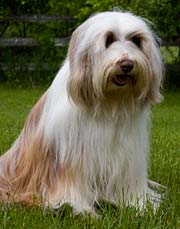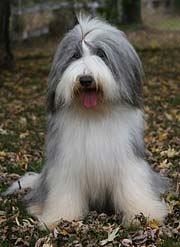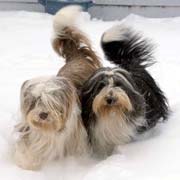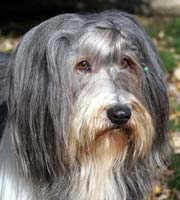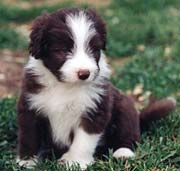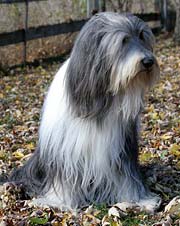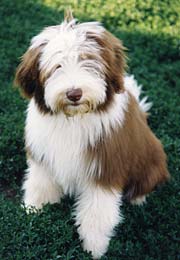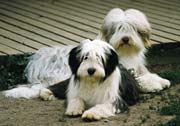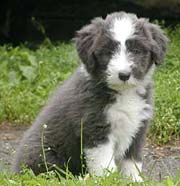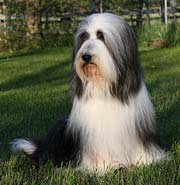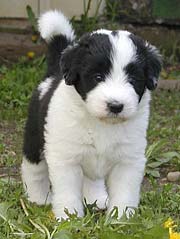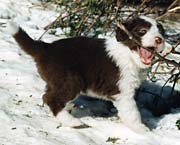For more about colour, and to seesome examples of the dramatic colour change Beardies go through, visit Colours Page 2. |
Beardies are born one of 4 colours - black, brown, blue (a greyish colour), or fawn (a lighter brown), with or without white markings. As they grow, the majority of Beardies will lighten in colour until about a year of age, at which time they will start to darken again. A black puppy can end up anything from light silver to jet black as an adult, and a brown pup anything from a light sandy to a deep chocolate.
Puppies in all 4 colours, showing the difference between black and blue (top) and brown and fawn (bottom) |
|
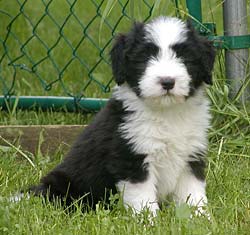 |
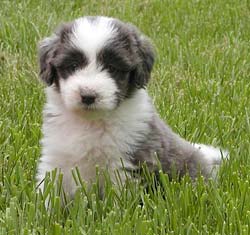 |
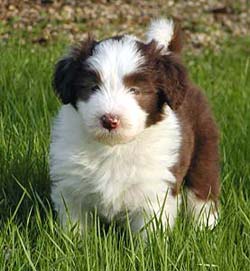 |
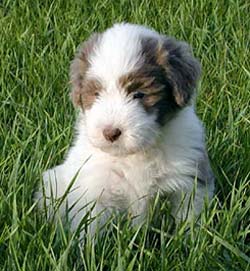 |
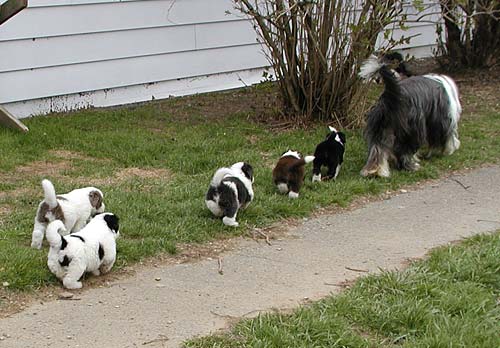 |
Mama Yancey (a black) with part of her litter, showing a rainbow of colours and markings. Following her is a black, brown, blue, fawn, and black pup. The latter 3 are body mismarks, or 'whites'. More on that below |
White markings are so typical that they are often assumed rather than mentioned. When talking about the colours of pups in a litter, a breeder will usually say they have a litter with 4 blacks and 3 browns, for instance, not mentioning the white markings since almost all pups will have some white. These white markings most commonly occur in the following places - muzzle, blaze between the eyes, neck, chest, front legs, lower part of rear legs, and tip of tail. Although dogs with the 'maximum' amount of white in these places are seen as 'flashy' or 'eye-catching', they are no more or less correct than their plainer counterparts. For show purposes symmetry of markings is irrelevant, though some feel they present a 'prettier picture'.
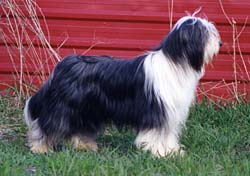 |
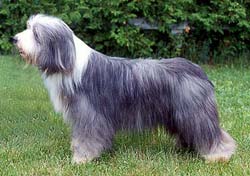 |
Above: littermates Piccolo and Quincy show the variation in markings, from flashy - with lots of white, to plainer, with minimal white. Both are equally correct. Both pups are 'blacks' though they matured to different shades of grey. Below: two pups illustrating a similar point - the pup on the right has the 'typical' white foreface and wide blaze, while the pup on the left has just a bit of white on his muzzle and no blaze. Again both are equally correct. |
|
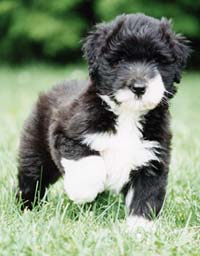 |
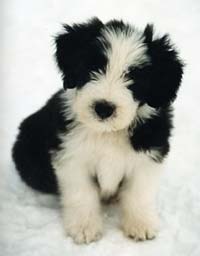 |
Mismarks have more white than allowed, or white in the wrong places, according to the breed standard. White that surrounds an eye, or extends onto the body behind the shoulder, for instance, would be considered mismarkings. Another type of mismark is the predominantly white Beardie, often with splotches of colour here and there (these pups are usually referred to as 'whites'.) Mismarkings would preclude a show career, but do nothing to prevent the dog from enjoying life as a wonderful pet, or competing in any other canine event such as obedience, agility, herding, etc. Since markings for the head and body are controlled by different genes, it is quite typical to have a head mismark with a correctly marked body, or a body mismark with a correctly marked head.
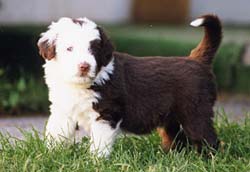 |
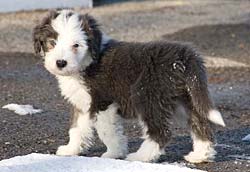 |
Above: two examples of head mismarks, where white surrounds the eye. Left is a brown and right is a blue. Below: two examples of body mismarks, where white extends on to the body behind the shoulder. In this case both are termed 'whites' because their bodies are predominantly white with just coloured patches. Left is a black and right is a blue. |
|
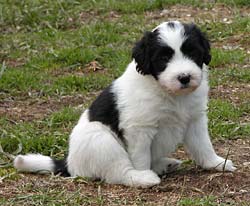 |
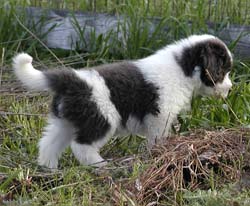 |
Tan markings - above the eyes, on the cheeks, on the legs where the colour meets the white, and under the tail - can occur with all colours. These markings will lighten along with the rest of the coat as the puppy grows up, and are often hardly noticeable on the adult coat. Beardies with tan markings are referred to as tricolours (often further distinguished by saying, for example, 'black tri' or 'brown tri'.)
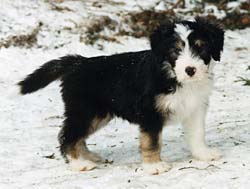 |
Left: an example of particularly strong tan markings on a black pup. |
Pigment (nose, lip and eye rim colour) corresponds to coat colour at birth - black pups have black pigment, brown pups have brown pigment, fawns a lighter brown pigment, and blue pups have grey pigment, which is often the only way as adults to tell them apart from a born-black.
To see some more examples of colours, and how dramatically Beardies can change from puppy to adult, go to the Colours 2 page.







